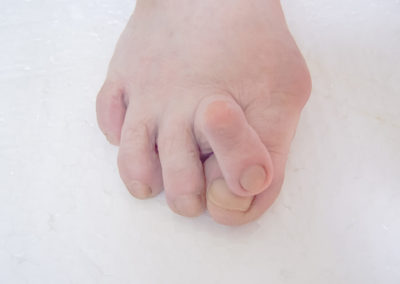Plantar Plate Injuries
What is a Plantar Plate Injury?
The plantar plate is a small ligament that anchors your toe to the ball of the foot. Sometimes the plantar plate can become torn or ruptured, causing the toe to become elevated in its position and tender under the ball for the foot.
It is not uncommon to have other foot problems coinciding with this, such as a hammer toe and bunion. You may need imaging of the foot to help diagnose this including x-rays and ultrasound and occasionally an MRI scan.
What Causes Plantar Plate Injuries?
Typically, the plantar plate is torn or ruptured through accidental injury but can also develop slowly over time due to progressive degeneration of the ligament, caused by repetitive over-use or toe abnormality, such as bunions.
What are the Treatment Options for Plantar Plate Injuries?
There are a number of non-surgical and surgical treatment options available to support plantar plate injuries.
Non-Surgical Treatment
Unfortunately, pain-relieving injections have a limited role when it comes to treating plantar plate injuries. Instead, using a DARCO toe splint can help to stabilise the toe and reduce foot pain. However, this is not a cure.
Orthotics can make your whole foot function better, making the best use of the foot anatomy that you have. However, they will not repair the damage to a torn or ruptured plantar plate.
Surgical Treatment
Often surgical intervention is the best treatment for plantar plate injuries.
What Happens During Surgery for Plantar Plate Injuries?
During the surgery, an incision is made on the top of the foot over the relevant toe. The metatarsal bone is cut and moved away to allow access to the plantar plate. This is then repaired and reattached to the base of the toe. This brings about good alignment of the toe. The metatarsal bone is then realigned and screwed back together.
If you have a hammer toe this will also be repaired, often with a temporary wire in place for 6 weeks. The advantage of this procedure is that you can fully weight bear after 48 hours in a post-op shoe and the correction tends to be solid.
Are There Risks or Side-Effects Following Surgery for Plantar Plate Injuries?
As with any medical procedure, there are risks which Mr. Kannegieter will always thoroughly explain to you prior to your treatment, so you can be informed every step of the way.
The main risks following surgery are:
- Pain
- Swelling
- Infection
- Deep vein thrombosis
- Complex Regional Pain Syndrome (CRPS)
Specific complications of Plantar Plate Injury Surgery:
- You may lose some sensation around the operation site.
- Sometimes the scar line is sore and more noticeable than normal. This will normally improve with time.
- The joint can stiffen up sometimes and lose some movement, this normally improves with time.
- The deformity can re-occur, with an elevated toe.
- Sometimes the bones fail to fuse together in the toe or metatarsal. This occurs rarely and might require immobilisation in a cast or more surgery.
- Occasionally shortening the metatarsal bone can lead to overload to the adjacent metatarsal bone and pain.
- Correction of the joint pain can sometimes highlight other foot problems that you were not aware of. Occasionally other joints in the forefoot can become painful.
What Happens After Surgery?
After the operation, you will be taken back to the ward and once able you should start taking your painkillers. Your surgeon will see you on the ward after the operation to answer any questions that you might have and make sure that you are fit to leave the hospital. You will be supplied with a special post-operative shoe. Crutches might be needed but this will be discussed with you beforehand.
You should not drive after foot surgery and should be accompanied home by a responsible adult.
You will also be advised of your follow up appointment date.
Mr. Kannegieter has years of experience treating plantar plate injuries and can advise on the right treatment plan for you.

Resources
Mr. Kannegieter has put together this useful PDF explaining what to expect from Plantar Plate Surgery.
